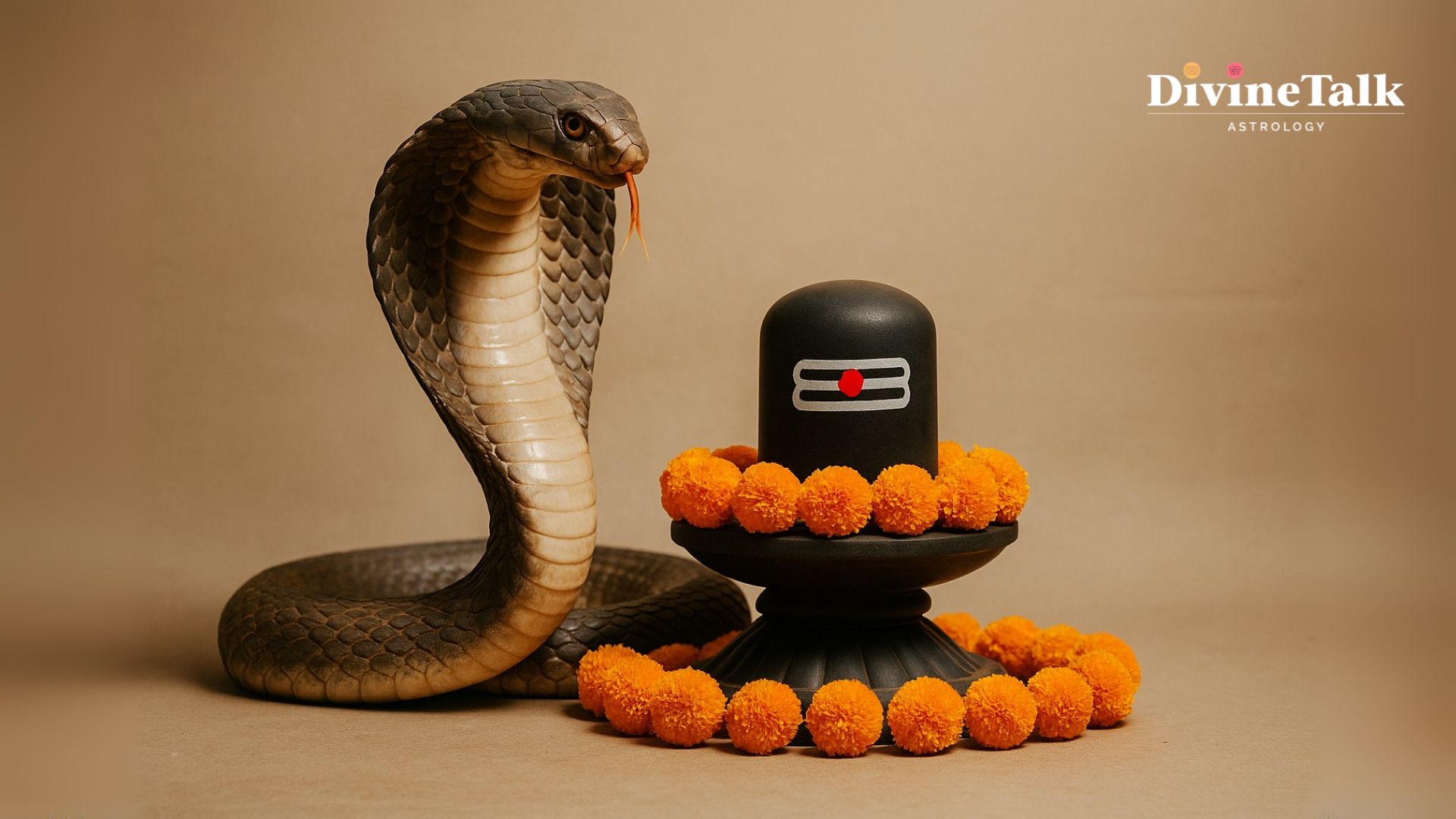The Mythology of Nag Panchami: Why Hinduism Worships Serpents

The Mythology of Nag Panchami: Why Hinduism Worships Serpents
(With a deeper look at spiritual healing through ancient tradition)
Once a year, somewhere in the middle of monsoon, when rain-soaked soil shakes with life and greenery, there takes place a very special and symbolic festival — Nag Panchami. To some, it may appear to be just a ritual of milk offerings to snake idols or even real cobras, but hidden beneath its surface, this day is packed with mythological layers, cosmic balance, karmic energies, and inner spiritual transformation.
So why exactly are the serpents so sacred in Hinduism? Why do we celebrate a day in their honor?
Let’s step back and review the myths and lesser-known facts about this sacred day — and how it continues to remain so closely relevant to our modern-day lives.
Why Serpents? Understanding the Symbolism
Fear of snakes exists in all cultures. But for the Hindus, snakes are not fearsome symbols of evil, but of energy, renewal, and the cosmic cycle of birth and rebirth.
Here’s why:
Sheshnag: The perpetually coiled serpent on which Lord Vishnu lies in recline — he represents the universe’s prop.
Vasuki: The serpent who volunteered to be the churning rope for the grand epic Samudra Manthan. Without him, divine nectar (amrit) could not be extracted.
Kaliya: A venomous snake overcome by young Krishna — symbolizing the triumph of divine consciousness over venomous ego and ignorance.
Idols of snakes guard the sanctum in the majority of temples across India. Not to keep unwanted visitors out — but to symbolize spiritual awakening, much like the kundalini energy coiled at the base of our spine.
The Legend Behind Nag Panchami
The origin of Nag Panchami is as complex as the serpents themselves. One such story is from the Mahabharata. It is stated that when King Parikshit’s son Janamejaya, to fulfill the last desire of his father, conducted a magnificent serpent sacrifice (Sarpa Satra) to avenge snakes for having killed his father by means of a snakebite, the entire serpent community got annihilated. But the sacrifice was averted by a serpent mother and human father-born sage, called Astika, who recalled the king that all animals must live in peace and revenge must not be unleashed.
Therefore, Nag Panchami is not just a worship ritual — it is an invitation to infuse harmony, to respect nature, and to cleanse hatred, ego, and karma.
Nag Panchami & Karmic Cleansing
Sarp Dosh (or Kala Sarp Dosh) is usually spoken of in Vedic astrology whenever an individual is faced with repeated, inexplicable obstacles — like delayed marriage, illness, professional failures, or family turmoil. It is believed to be a result of karmic aberrations, generally associated with disrespect or violence to serpent energy in some former life or undischarged family commitments.
It’s not superstition. It’s energy awareness.
If life feels stuck despite your best efforts — if the same problems keep returning in cycles — it could be the soul signaling something deeper.
This is where ancient rituals such as Sarp Dosh Nivaran Pooja step in. They’re not magic tricks. They’re spiritual processes that synchronize your energy with cosmic forces, assist you in respecting what has been forgotten, and dissolve unseen karmic blockages that modern reason cannot solve.
Why This Ritual Is More Important Now
We have a tendency to believe that technology and preparation will solve everything. And yes, to a certain point, they do. But there are moments in life when no solution works — efforts fall short, relationships collapse, fear lingers.
Ancient seers understood this. They did not sermonize; they created rituals that return our energy into balance and link us with higher frequencies.
The Sarp Dosh Nivaran Pooja, done especially during the spiritually charged month of Shravan and on Nag Panchami, is believed to be extra special. It’s said to calm tempestuous ancestral energies, protect families from mysterious curses, and bring harmony to life.
Its participants may not always speak of miracles — but they do speak of relief, clarity, and an emotional lightness that follows.
In Conclusion: A Day of Respect, Release, and Realignment
Nag Panchami is not a snake festival. It’s a day of healing — healing the human-nature relationship, karma and consequences, the things we deny and what actually drives it.
It invites us to pause and reflect:
Have we honored the energy that sustains us?
Are we carrying pain not in this lifetime?
And are we ready to seek assistance — not merely from science, but from old spiritual systems still powerful?
For those who feel the tug of deeper healing, guided Vedic rituals like Sarp Dosh Nivaran Pooja offer more than symbolic activity. They offer a path back to peace — both inside and out.





